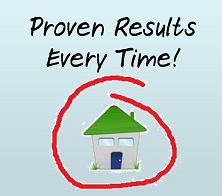WASHINGTON (AP) -- The number of Americans who signed contracts to buy homes rose in January to the highest level in nearly two years, supporting the view that the housing market is gradually coming back.
The National Association of Realtors said Monday that its index of sales agreements rose 2 percent last month to a reading of 97. That's the highest reading since April 2010, the last month that buyers could qualify for a federal home-buying tax credit and the last time the reading was above 100.
A reading of 100 is considered healthy.
The Realtors' group also released revised data for 2011. That lowered November's initial 19-month high of 100.1 to 96.9. But contracts have been markedly up since the summer when some feared a second recession loomed.
Contract signings typically indicate where the housing market is headed. There's a one- to two-month lag between a signed contract and a completed deal.
A sale isn't final until a mortgage is closed. One-third of Realtors complain that they've had at least one contract scuttled in January, December, November and October, according to the Realtors' group. That's up from 18 percent of Realtors in September.
Nonetheless, the gain in signed contracts supports other evidence of improvement in the housing market.
Pierre Ellis, an economist at Decision Economics, said home sales and building is in the midst of "ongoing general, but gentle, progress."
Builders are growing more optimistic after seeing more people express interest in buying this year. Sales of previously occupied homes are at their highest level since May 2010. More first-time buyers are making purchases. And the supply of homes fell last month to its lowest point in nearly seven years, which could push home prices higher.
Homes are the most affordable they've been in decades. And mortgage rates have never been cheaper.
Much of the optimism has come because hiring has picked up. More jobs are critical to a housing rebound.
"Easier mortgage lending criteria, very low rates and the improving labor market are all contributing to the beginnings of a real upturn in home sales, if not yet prices," said Ian Shepherdson, chief U.S. economist at High Frequency Economics.
Sales may also be rising because of an April deadline for higher mortgage application fees for Fannie Mae and Freddie Mac-backed home loans. The government-controlled mortgage buyersown or guarantee about half of all U.S. mortgages and 90 percent of new loans, and have been telling customers to submit their applications now.
Analysts caution that the damage from the housing bust is deep and the industry is years away from fully recovering.
Potential buyers are holding off for a number of reasons. High unemployment and weak job growth have deterred many potential buyers. Loans are harder to come by. Lenders are requiring bigger down payments and strong credit scores to qualify.
Even those with good credit and stable finances are hesitant to buy out of concern home prices will keep falling.






